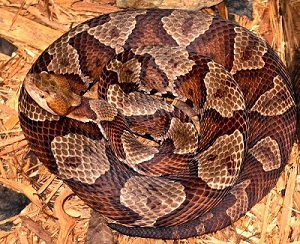Although the exact number of snakebites is unknown, the World Health Organization (WHO) reported that globally an estimated 5.4 million people are bitten each year with 2.7 million cases of envenomings. The cases mostly occur in areas with fragile healthcare systems in Africa, Asia and Latin America.
Snake venoms can cause paralysis of respiratory muscles, bleeding disorders that can be fatal, irreversible renal failure, or tissue damage leading to physical disabilities. Since antivenoms (antiserum) are highly effective for these symptoms, administering quality antivenom at an early stage is important. The WHO designated snakebite envenoming as a neglected tropical disease (NTD) in 2018.
Causes of Toxicity
Of about 3,000 snake species in the world, about 15% are considered to be harmful to humans. Snake venoms are complex mixtures of proteins. The lethal effects of snake venoms are attributed to the binding of smaller polypeptides to multiple physiological receptors. Symptoms from injected snake venom appear locally, systemically, or in a combination of both, depending on the amount of venom and species of snake.

Symptoms
The components of snake venom alter capillary permeability, leading to leakage of blood components, edema, hypovolemic shock due to decreased volume of circulating blood, heart and renal failures. Coagulopathy, thrombocytopenia or intravascular clotting caused by snake venom can induce a condition similar to disseminated intravascular coagulation syndrome, which may result in bleeding. Renal failure may be caused by severe hypotension, hemolysis, rhabdomyolysis, or nephrotoxic effects of snake venom. Some snake venoms cause presynaptic neuromuscular blockade, leading to respiratory paralysis in some cases.
Both venomous and non-venomous snakebites cause autonomic symptoms (e.g., nausea, vomiting, tachycardia, diarrhea, sweating) from terror, making it difficult to distinguish from the systemic symptoms of snake venom.
Individuals previously sensitized to snake venom may develop anaphylaxis.
Diagnosis and Treatment
Diagnostic Methods
Definite diagnosis is made by identifying the snake and clinical symptoms that appear due to the envenoming.
Treatment
If available, antivenoms (antiserum) are highly effective for snakebite envenoming. Treatment may consist of a combination of first aid, supportive care, antivenoms (antiserum) dosing, and wound care. Identifying the species of the snake is vital for selecting the appropriate antivenoms - the most important factor in effective treatment. Supportive care includes respiratory support, sedation, fluid replacement for shock, and administering vasopressors.
Prevention
Comprehensive efforts are needed, including raising public awareness to seek medical treatment in the event of a snakebite, strengthening health systems and improving diagnostic capabilities, and risk-based placement of appropriate antivenoms.
High Risk Regions
Most of snakebite envenoming cases occur in Africa, Asia and Latin America. High-risk populations include farmers in rural communities, nomads and those with limited access to education and healthcare. Children are likely to experience more severe symptoms than adults due to their smaller body mass. Additionally, pregnant women are exposed to extremely high risk in some cultures where women's access to healthcare is limited.
Estimated Number of Cases
The WHO reported that 2 million people are envenomed by snakes in Asia each year, while in Africa there are an estimated 430,000 to 580,000 snakebites annually that need treatment.
Estimated Number of Deaths
According to the WHO, it is estimated that around 80,000 to 138,000 people die each year due to snakebites, and the number is three times higher for people who experience amputations of limbs or other permanent disabilities caused by snakebites. However, the exact number of snakebites is unknown. Snakebite victims often choose traditional treatment over medical treatment, resulting in lower reported incidence and mortality rates.
References (Accessed: November 28, 2023)
World Health Organization (WHO) - Snakebite envenoming
WHO - Snakebite
Centers for Disease Control and Prevention (CDC) - Venomous Snakes
MSD Manual Professional Version (msdmanuals.com) - Snakebites
